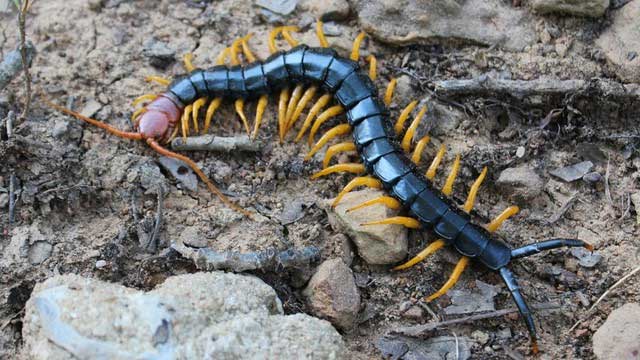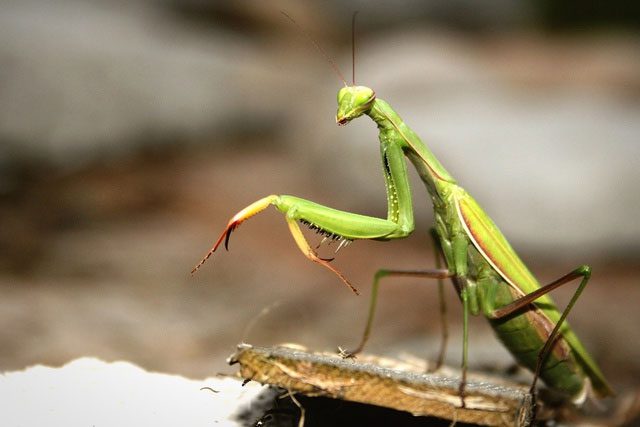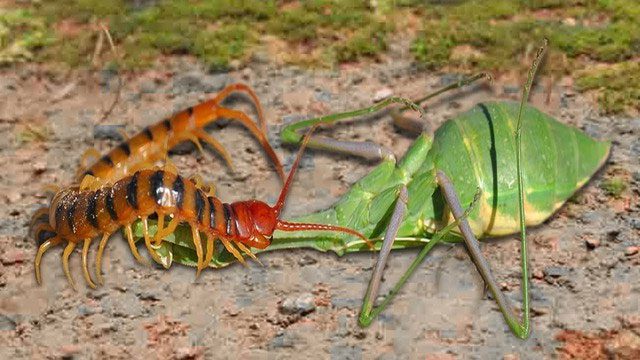Praying mantises and centipedes are both formidable predatory insects. If they faced off, which side would prevail?
In the natural world, every species must struggle to survive. The battle between centipedes and praying mantises is not just a fight for life but also a demonstration of the incredible adaptability and predatory capabilities of these two insect species. Interestingly, the confrontation between them tends to be quite balanced, making the outcome difficult to predict.
Praying Mantises and Centipedes – Formidable Adversaries
According to Science Daily, centipede is the Vietnamese term for a group of arthropods belonging to the class Chilopoda within the subphylum Myriapoda. Centipedes are elongated, segmented creatures with hair, each segment possessing a pair of legs. The number of legs varies widely among centipede species, ranging from fewer than 20 to over 300 legs.

Centipedes have a unique digestive system that allows them to digest prey even while still alive. (Image: Pinterest)
With their long legs and agile movement, centipedes are active predators. They possess a unique digestive system that enables them to consume prey even while it is still alive. An adult centipede can hunt a variety of insects, from small spiders to larger species.
The order Mantodea (scientific name: Mantodea) is part of the superorder Dictyoptera. They have been present on Earth for about 20 million years. Praying mantises are large insects, measuring 40 – 80 mm in length, with two developed forewings and two hindwings.

Praying mantises can use their sharp mandibles to bite their enemies. (Image: Pinterest)
Praying mantises are renowned for their sharp forelegs, quick reflexes, and exceptional camouflage skills, making them astute predators in the insect world. This predator typically feeds on smaller insects such as flies, mosquitoes, bees, beetles, and cockroaches.
Both centipedes and praying mantises are skilled hunters. The centipede, with its first pair of legs transformed into venomous pincers, is ready to inject venom into its prey. The praying mantis, equipped with a sturdy exoskeleton and sharp mandibles, is prepared to confront any challenger.
The Intense Battle and an Unexpected Conclusion
According to Phys, when these two predators encounter each other, the battle for survival begins. When a centipede spots its target, it quickly approaches with stealthy and skillful movements. The praying mantis, with its heightened instinct for danger, will use its forelegs for defense and prepare for an attack when it detects a threat.

Sometimes, a precise strike can determine the fate of both the centipede and the praying mantis during their confrontation. (Image: Pinterest)
The centipede lunges at the praying mantis, attempting to inject its venom into the adversary. The praying mantis does not back down, using its sharp mandibles to bite its foe. To conclude the battle, not only strength but also luck is required. Sometimes, a precise strike can determine the fate of both the centipede and the praying mantis during their confrontation. After these fierce battles, both the mantis and the centipede often remain motionless. However, in some cases, if either the centipede or the mantis is too severely injured, they may not survive.
The conflict between centipedes and praying mantises exemplifies the harsh yet wondrous aspects of nature. Whether victorious or defeated, both demonstrate remarkable perseverance, strength, and survival capabilities.


















































